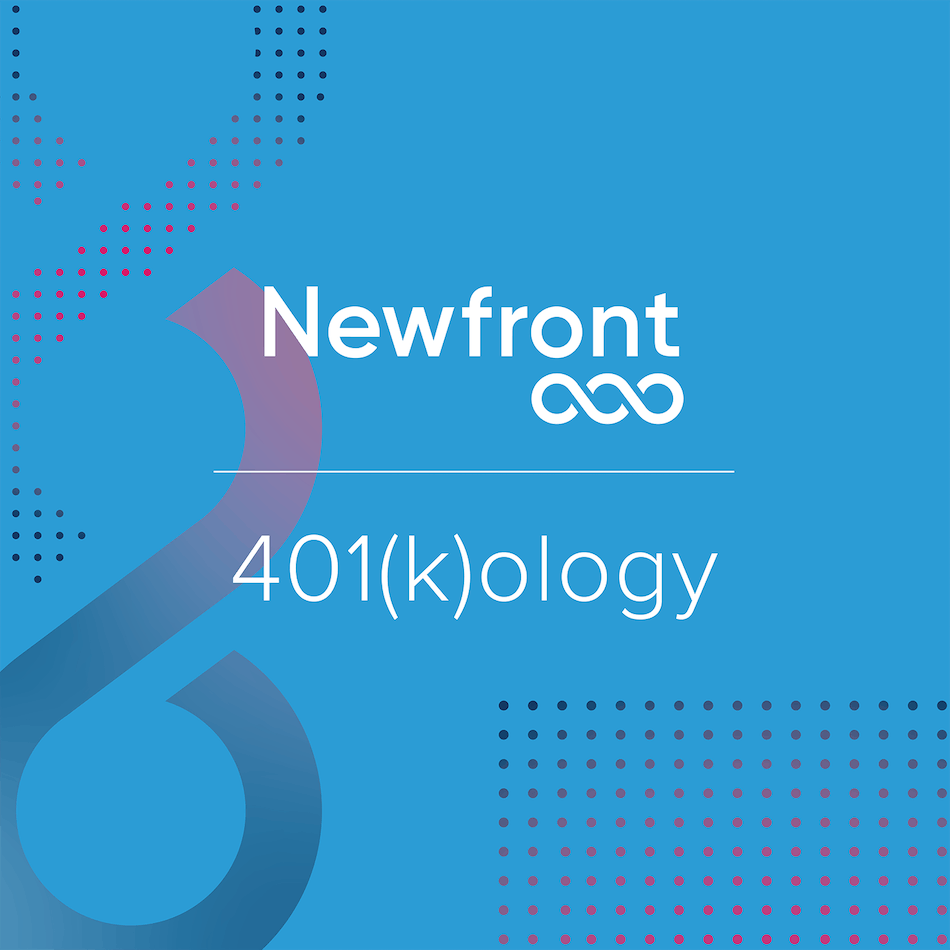401(k)ology – New Requirements for a Discretionary Match
By Joni L. Jennings, CPC, CPFA®, NQPC™ | Published May 27, 2022

Oh, how the regulatory bodies overseeing retirement plans love a good participant notice. Some decades ago, in a 401(k) galaxy very far removed from the one we reside in today, participant communication about plan contributions was limited (for the most part) to the Summary Plan Description (“SPD”). In more recent times, notices have become the regulators’ revered method of communicating to plan participants.
Matching Contributions – A History Lesson
Plan sponsors have historically communicated matching contributions in plan highlights or enrollment materials as an incentive for employees to save more for retirement, to help pass nondiscrimination testing and to preserve highly compensated employees’ contributions. Unlike discretionary profit-sharing contributions (which are not dependent on a participant’s deferral election), discretionary matching contributions are allocated only to participants who elect to make salary deferral contributions to the 401(k) plan.
Without specific guidelines as to the information required to be communicated to participants about the discretionary match (other than the employer had the discretion to make the contribution), many employers focused on the allocation formula alone. For instance, the enrollment materials may have indicated that the employer would make a discretionary match equal to 50% of a participant’s deferrals up 6% of compensation. However, without more specific details, participants have not been able to accurately calculate the match they are entitled to receive.
In addition to the formula, the allocation of a matching contribution is also dependent on the compensation period used to determine the match, any plan-imposed limits, and the timing of the contributions. For example, unless a 401(k) plan uses the full plan year “contribution period” taking into consideration deferrals and compensation for the entire plan year with a “true-up” feature, the match formula noted above will yield a different result from the same match calculated and deposited each pay period. And what if the compensation definition for matching contributions is not gross compensation or excludes pre-entry date compensation, bonuses, or overtime?
The IRS has recognized this discretionary matching contribution information gap and voila, a new required participant notice is born.
When did this change occur?
The change in the discretionary matching contribution requirements occurred during the Cycle 3 restatement process.
All qualified retirement plans are required to maintain a legal plan document. Not only do the plan documents include provisions specific to your 401(k) plan, but they also include references to the Internal Revenue Code provisions which govern plan operations. As new retirement legislation is enacted, the language in your plan document frequently needs to be updated to reflect the changes.
The IRS created a pre-approved document program that runs on a six-year cycle (the restatement period) to assist plan sponsors with maintaining a compliant document without the burden of individual amendments for every change in the regulations. During this restatement period, the IRS issues guidance on the provisions that must be updated; and, once the document providers receive the IRS’ approval, plan sponsors must adopt the updated version by the end of the restatement period.
The current restatement deadline, referred to as “Cycle 3,” ends July 31, 2022. If you established a new 401(k) plan after mid to late 2020, you may have adopted a Cycle 3 version of your provider’s pre-approved document. It will be important to know the date the Cycle 3 pre-approved plan document was adopted, as that will dictate the effective date of the new notice requirement. Cycle 3 documents could have been adopted in 2020, 2021 or 2022.
**Why the change? **
During the Cycle 3 pre-approval process, the IRS considered eliminating “discretionary” matches altogether because Treasury Regulation §1.401-1(b)(1)(ii) states that “plans must provide a predetermined formula for allocating the contributions made to the plan among the participants.” This qualification requirement is often referred to as “definitely determinable benefits” or the “definitely determinable rule”.
Ultimately, the IRS acquiesced to the concept of a discretionary match in general, provided that the plan documents include 1) a condition requiring the Plan Sponsor to communicate the match in writing to the Plan Administrator/Trustee and 2) that the Plan Sponsor/Plan Administrator communicate the matching contribution to the participants who are eligible to receive the match.
The communication from the Plan Sponsor (the “Employer”) may be in the form of “Minutes of a Special Meeting” or, perhaps less formally, a memorandum to the retirement committee files. The purpose of first requirement is to document the exact discretionary match for the plan year and to provide funding instructions to the Plan Administrator/Trustee. The purpose of the second requirement is to provide a written communication with the matching contribution details sufficient for the match to be definitely determinable for employees.
When is the notice provided?
The timing of the notice depends on whether your discretionary match is determined and funded annually, or whether you fund the match on a periodic basis (per pay period, monthly or quarterly).
Annual match notice - Must be provided to eligible participants within 60 days after the match has been deposited to the plan for the plan year
Periodic match notice – Must be provided to eligible participants within 60 days after the last match has been deposited to the plan for the plan year
For a periodic match funded more frequently than annually, the Plan Sponsor may provide a prospective notice to indicate the match that the Plan Sponsor intends to make on an ongoing basis.
Best Practice: Provide the match notice prospectively for any periodic matching contributions and a new notice if that matching contribution will change mid-year. That allows participants to make informed decisions about their salary deferral elections and to make changes if the matching contribution is reduced or eliminated. The required notice must still be provided after the last match has been made for the plan year.
What is required to be in the Notice?
Employees are not likely to read long notices, so employers should make best efforts to include the required notice information as concisely as possible. Your document service provider and/or recordkeeper may have sample notices you may use to communicate the match to your participants.
Following are some of the items that may be required for your notice:
The effective date of the match
The type of match (percentage or flat dollar amount)
The limits applicable to deferrals (e.g., capped at deferrals up to 6% of eligible compensation)
The limit on the match (e.g., match will not exceed a percentage of plan compensation or flat dollar amount)
The period used to determine the match (each payroll period, monthly, quarterly, annually)
Any additional requirements that apply to your match
Divisions or job classes, where the match is different
The Plan Name and Contact Information
The date of the notice
You may refer to the SPD in the notice for specific information regarding plan eligibility requirements, allocation conditions and eligible plan compensation.
Best Practice: Keep a copy of the notice(s) in the plan’s permanent records along with the minutes/memorandum regarding the match.
When is the new requirement applicable to your plan?
The first plan year the new requirement impacts your 401(k) plan depends on the date the Cycle 3 restatement was adopted. If the document was executed in 2021, the notice requirement will be effective for the first plan year beginning in 2022. If the document was executed in 2022, the notice requirement will be effective for the first plan year beginning in 2023.
There is one exception to the discretionary match notice requirement if the allocation of the discretionary match is a uniform percentage of eligible employee deferrals. The application here is limited, as most employers utilize some formula to determine the match.
Best practice: Failure to satisfy the discretionary match notice requirement is an operational failure, so if in doubt, provide the notice.
Conclusion
While some notices may seem overwhelming or irrelevant to participants, the new match notice is one that most participants will read and will find very useful. Matching contributions are a great way to retain and recruit employees and are one of the best incentives to encourage saving for retirement. Employers should carefully craft the match notice, not only to promote retirement saving but to promote the employer as well.
Our team at Newfront is available to assist you with any questions regarding the new matching notice requirement or any other plan related matters.

Joni L. Jennings, CPC, CPFA®, NQPC™
Chief Compliance Officer, Newfront Retirement Services, Inc.
Joni Jennings, CPC, CPFA®, NQPC™ is Newfront Retirement Services, Inc. Chief Compliance Officer. Her 30 years of ERISA compliance experience expands value to sponsors of qualified retirement plans by offering compliance support to our team of advisors and valued clients. She specializes in IRS/DOL plan corrections for 401(k) plans, plan documents and plan design.


